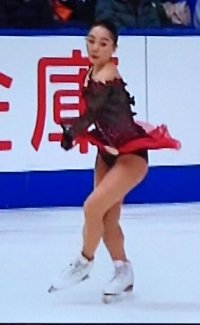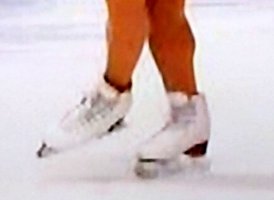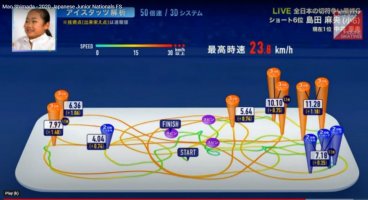- Joined
- Dec 4, 2004
I need a bit of help understanding jump landings. As I understand it, most all jumps are landed on a curve. So I assumed that when a skater's toe pick/blade hit the ice, it would define a point for a tangent line to that curve to determine if a jump was under rotated or not. My dear Wakaba got a "Q" for being right on the 90 degree point of landing her 3A. So I took Tara and Johnny's super slow mo of the landing and slowed it down even more. It doesnt look to me like the judges have a big screen tv in order to do what I can do at home. In the first pic, the front of the blade has landed and also the flat of the blade. Lots of shavings. But I could see how that could be called a Q and not a UR. But the second pic was taken a tad sooner than the first. Again, the toe has landed and then the blade is either almost down or down. That looks like a UR. Is my thought process right? I would assume camera angle is important but flying ice trumps camera angle.

A short time before


A short time before




